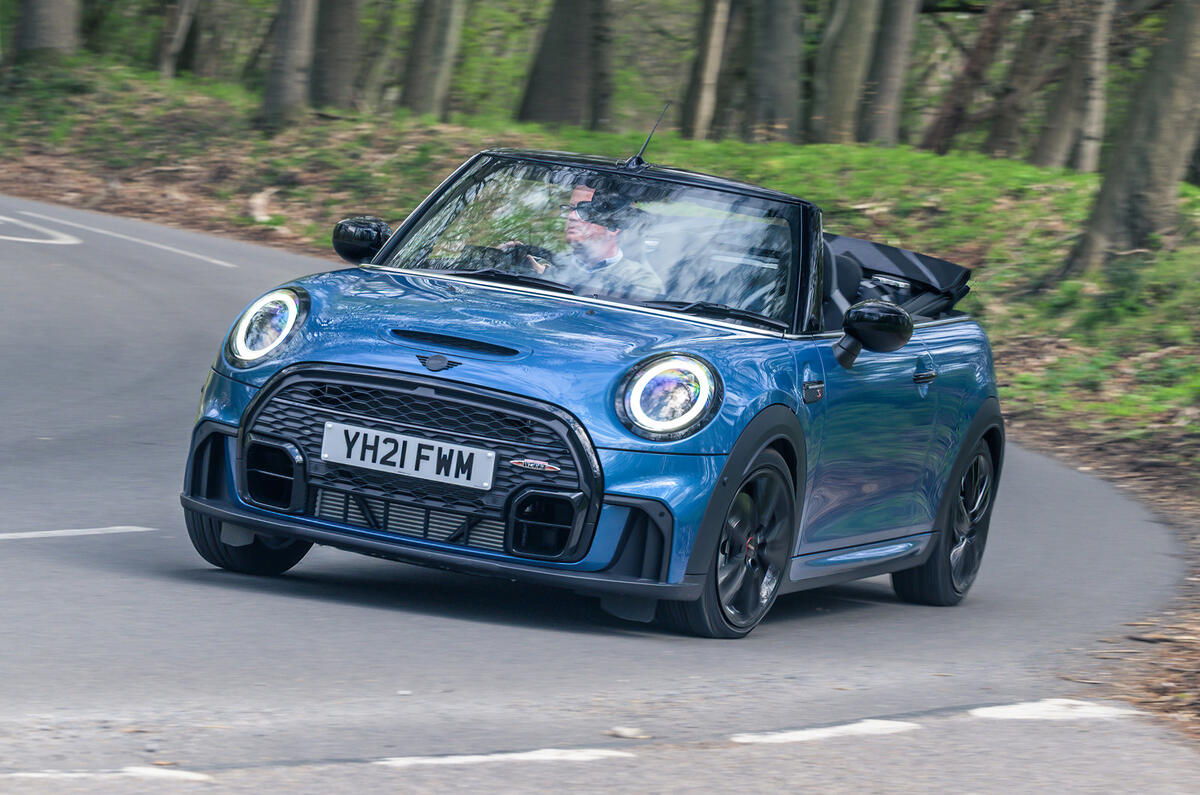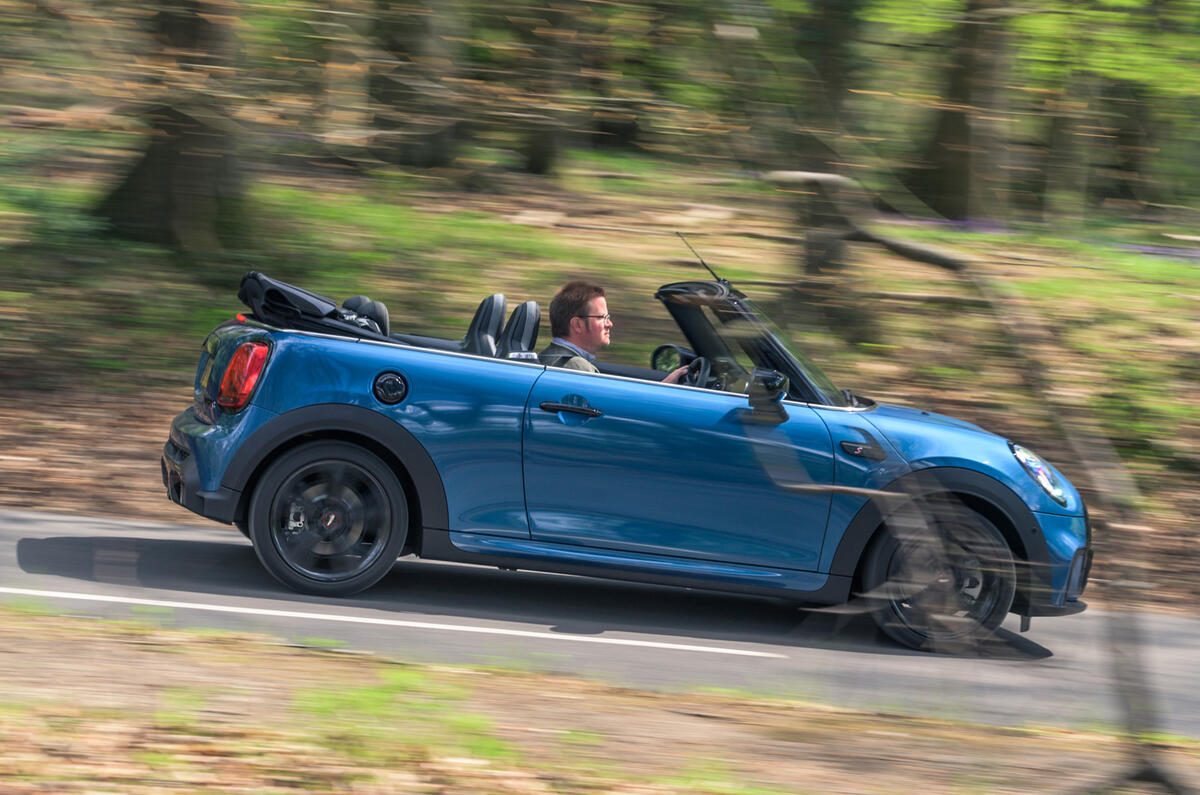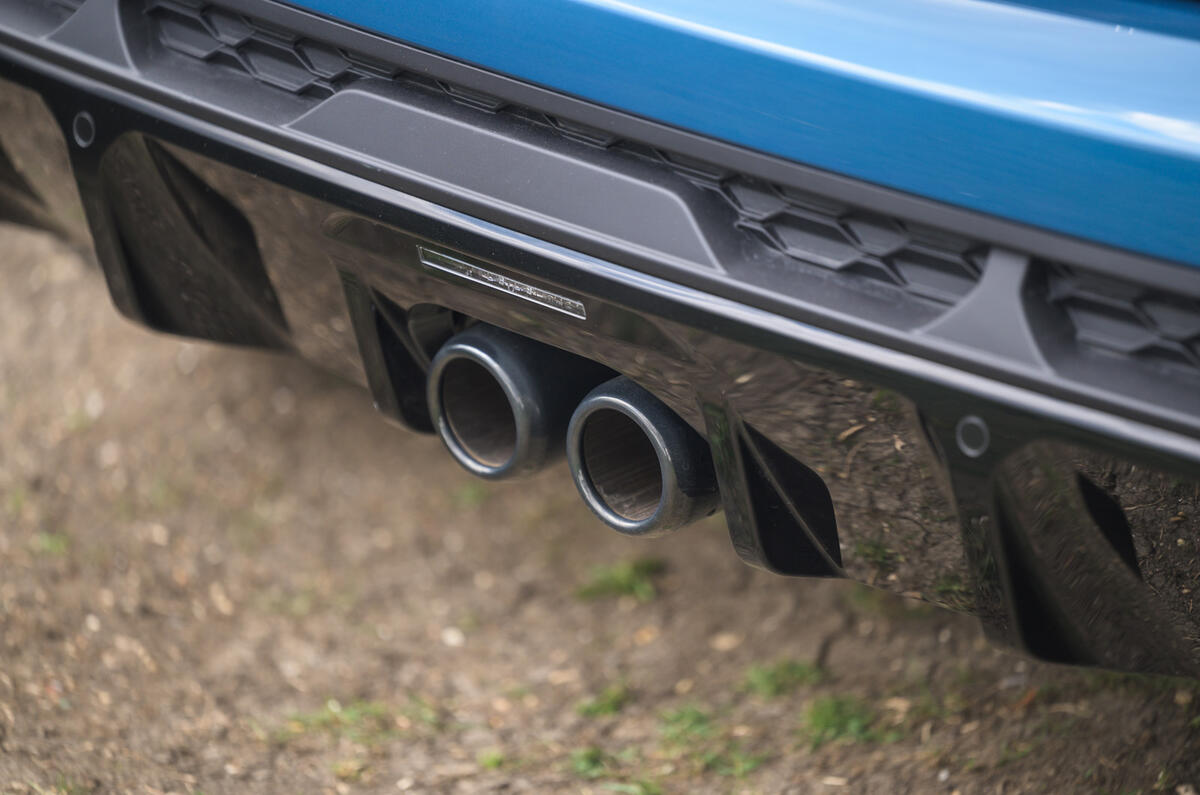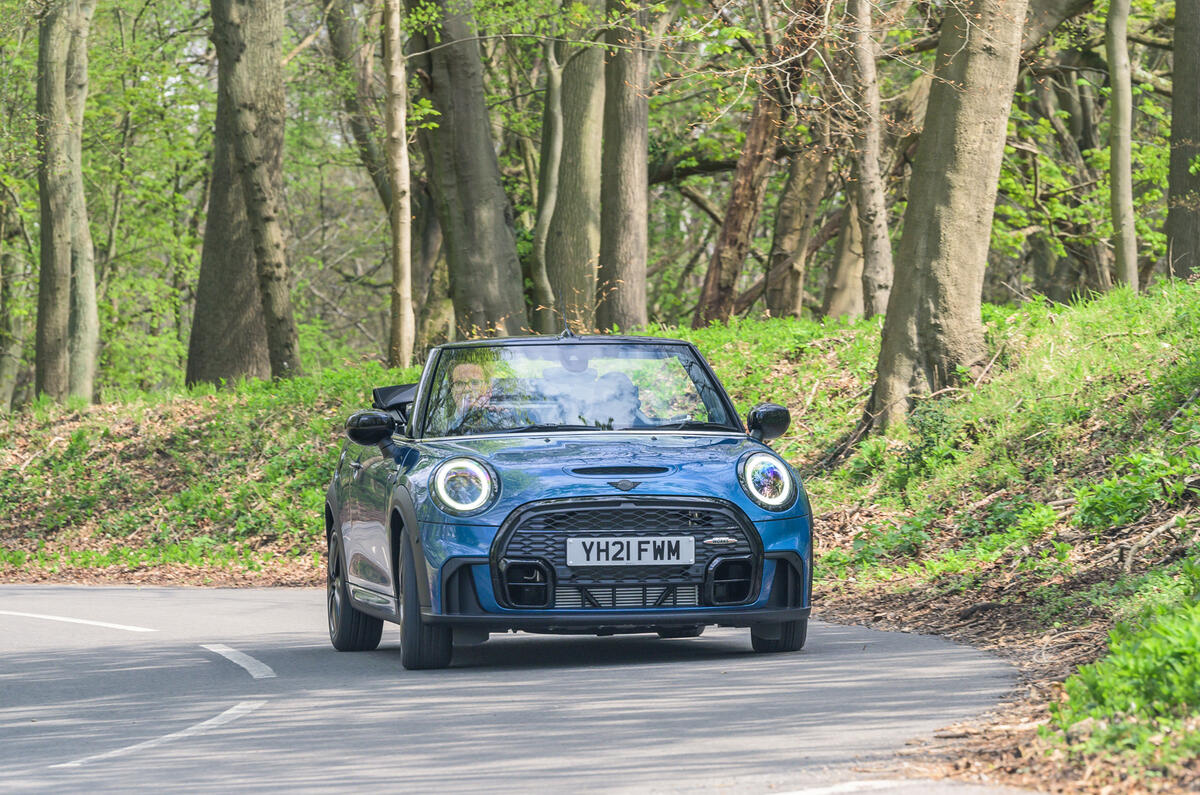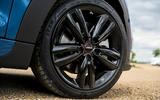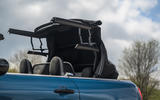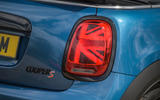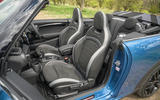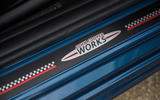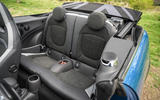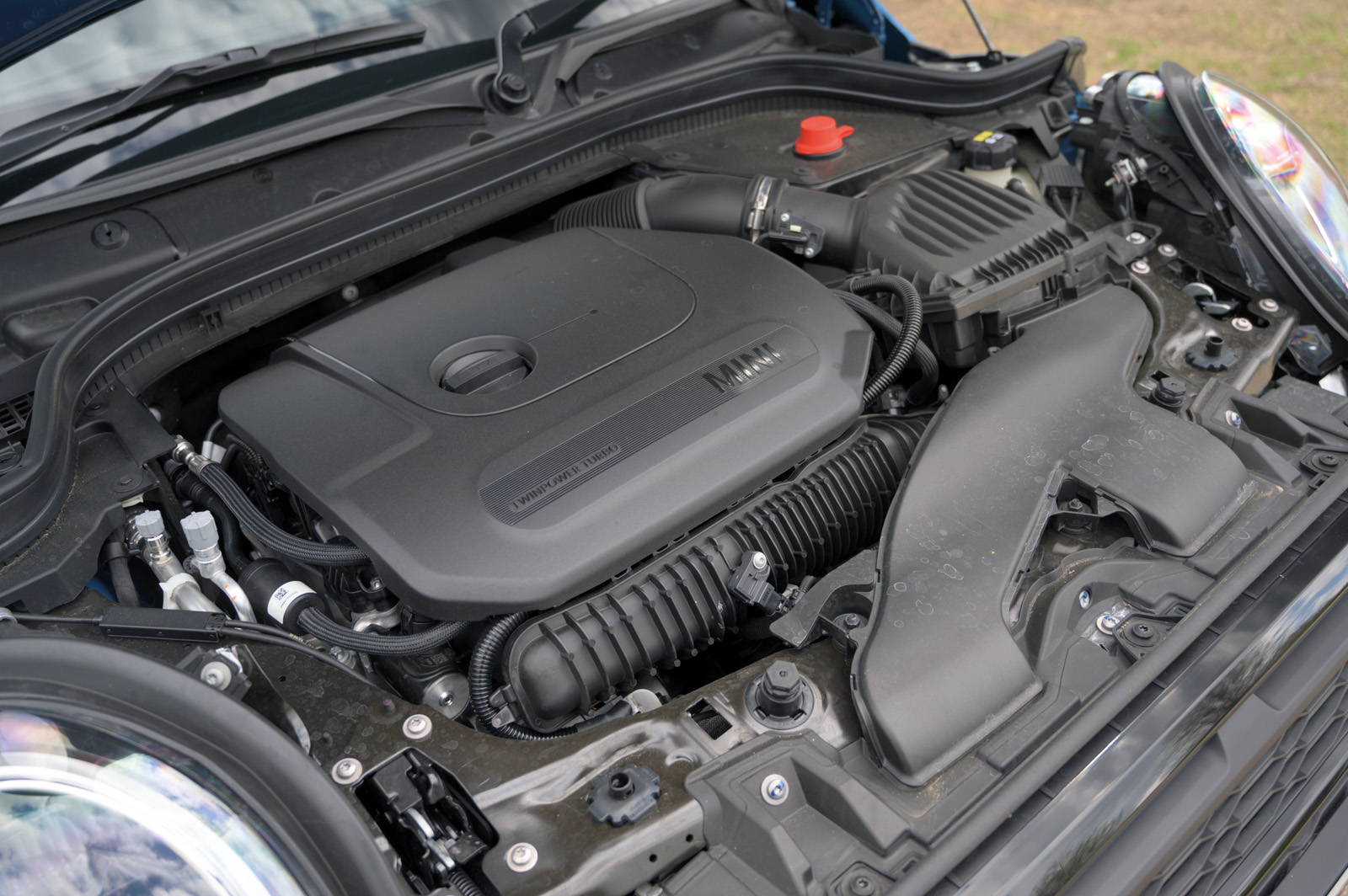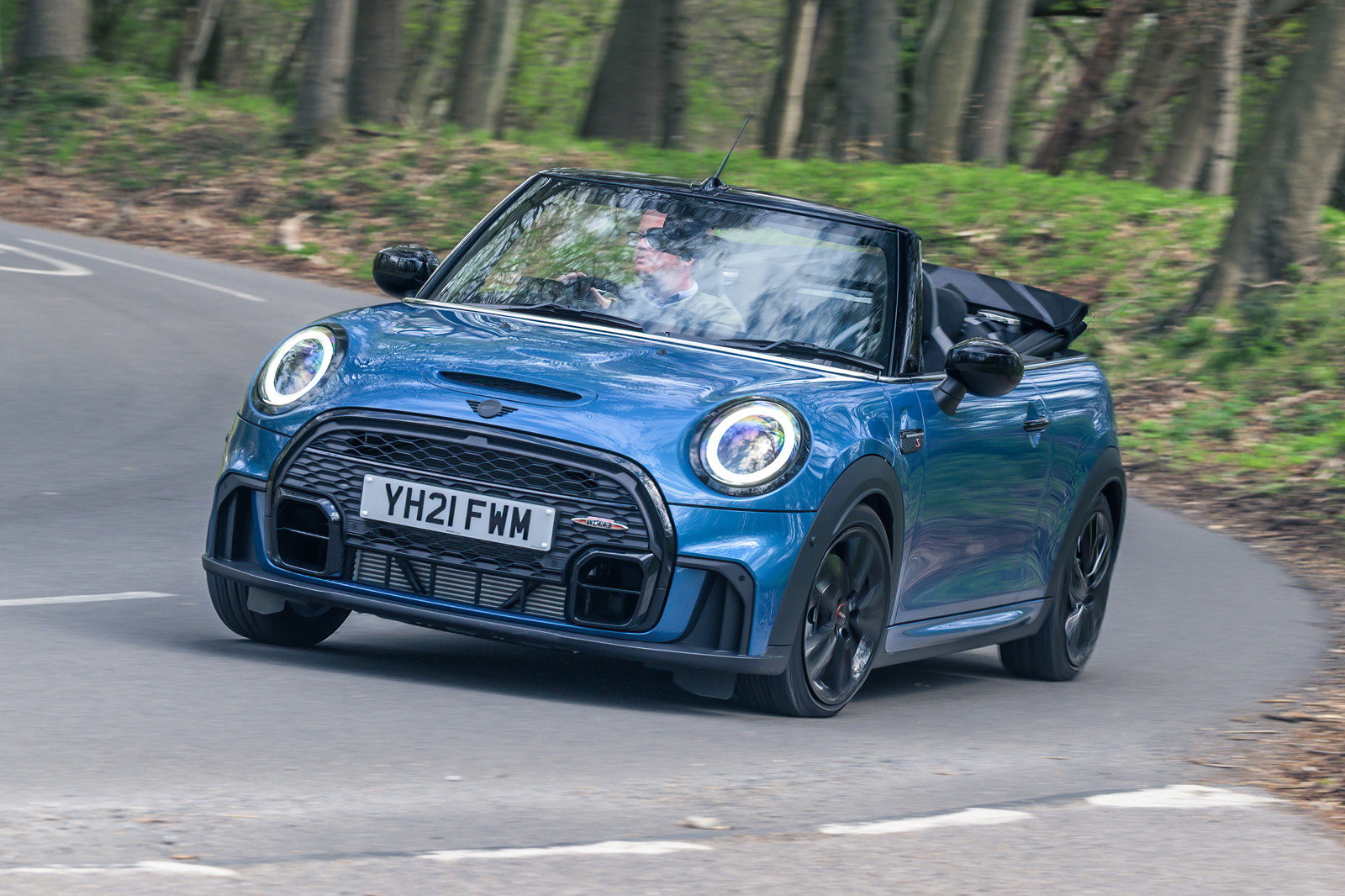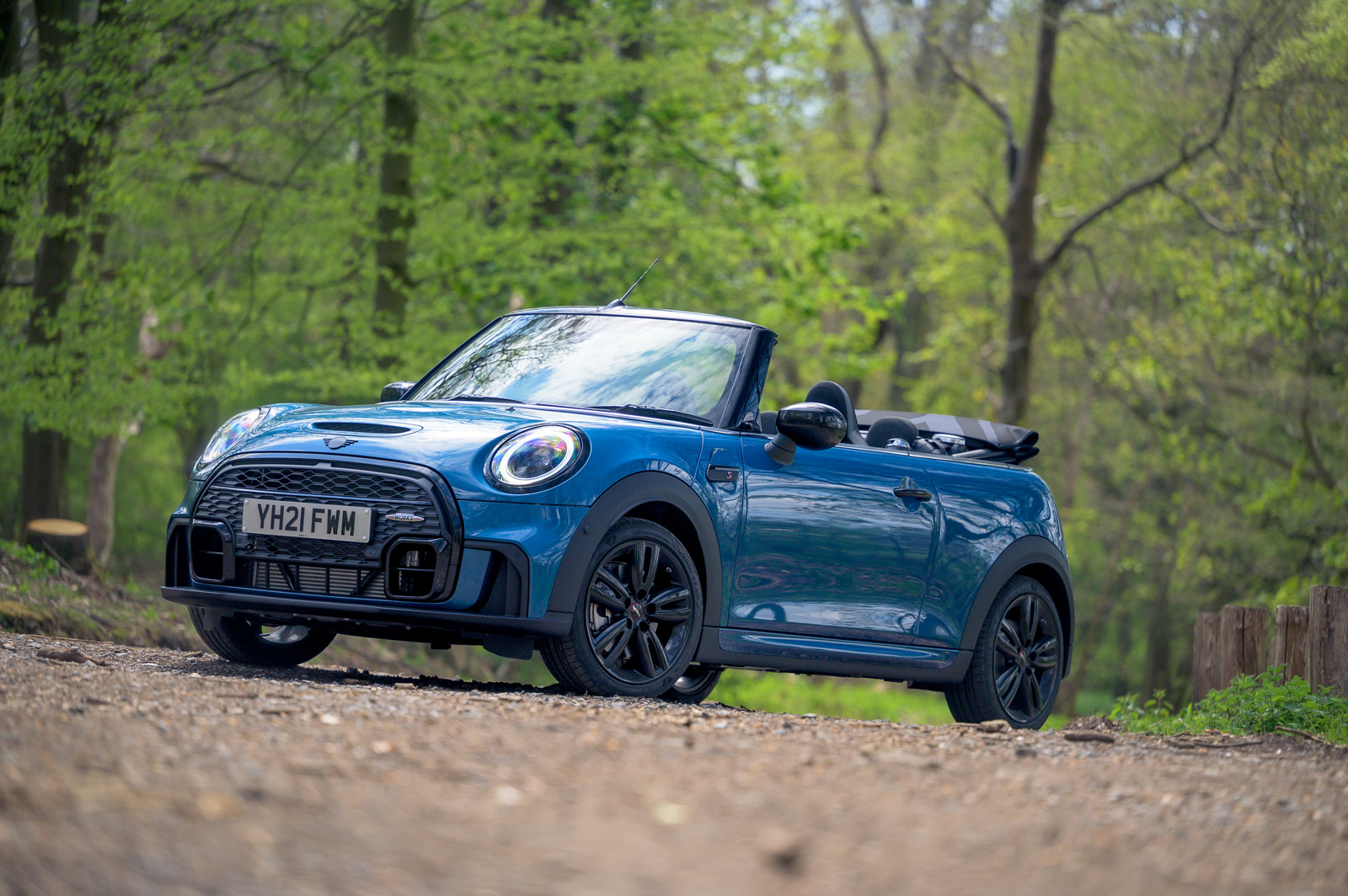A great many Mini owners can probably count on their fingers the number of times the back seats of their cars have been sat in. But in a convertible market in which those seats are very often so small as to be rendered unusable, having a pair of rear chairs for occasional use, or even on which to throw a couple of soft bags, could make a big difference.
The Mini Convertible doesn’t really get close to matching the carrying space or versatility of even the three-door version – but, thanks to rear seatbacks that fold and a clever (if slightly fiddly) expanding load bay opening, it does allow you to access and use what space it affords very obligingly.
The boot opening drops down like a tailgate rather than swinging upwards, while the trailing edge of the car’s cloth hood can be unlatched and then propped up on its handles to make for an access space that’s just about big enough to admit buggies and flight cases.
The rear bench is narrower than it would be in a regular Mini. Two kids in child seats fill it with absolutely no room to spare, but they will be comfortable enough and adequately sheltered from the wind on shorter, slower trips so long as you’re prepared to offer them a little communal leg room from the forward quarters.
Up front, the Mini’s cabin shows evidence of change mostly in what is immediately ahead of the driver: a new nappa leather steering wheel gets redesigned button consoles on its lateral spokes, while behind that our test car featured a new set of digital instruments and a pop-up head-up display. The rim of the wheel seems a bit overly girthy for a car of this size, but it’s pleasant to the touch. The simplified design of the new button consoles make for intuitive operation, meanwhile, and because the buttons themselves are flush-fitting, you can feed the wheel through your hands without fear of catching one by mistake.
The driving position is first rate: low, well supported and surprisingly roomy, but also adjustable for those who don’t want to be quite so recumbent. Our test car’s JCW sports seats were comfortable despite their slightly racy appearance.
Forward visibility is great despite sitting so low, but it’s compromised to the rear, and especially so with the roof in place: emerging safely from offset-angled junctions can make for a lot of neck-craning.
Mini Convertible infotainment and sat-nav
There’s good and bad news to report here. The good is that no Mini comes without a touchscreen infotainment system, nor without a separate rotary input device for those who don’t like finger smudges. It’s a new system with a rethought menu architecture whose home screen can be customised to your own liking, and it’s responsive and clear.
The bad news is that you have to pay extra for smartphone mirroring, and that Mini only supports Apple CarPlay (although networked services are available for other handsets via a USB connection and the Mini Connected app).
The same option pack that gets you CarPlay support also gets you factory nav anyway – and if you want wireless device charging as well, you’ll need to go the whole hog with the Navigation Plus package (£2400).
The car’s factory navigation system is very good, and can be voice-programmed consistently easily; and the Harman Kardon premium audio system (another £600) is equally impressive. But, for the money, so should they be.


